HIStalk Interviews Alexis Gilroy, JD, Partner, Jones Day
Alexis Gilroy, JD is a partner with the Jones Day law firm of Washington, DC. She served as a subject matter expert for the Federation of State Medical Boards, which recently issued its model policy for telemedicine.

My interpretation of FSMB’s model policy is that it focuses on trying to prevent online pill mills rather than expanding telemedicine, emphasizing that requirements are the same for both traditional visits and telemedicine encounters.
I think that’s right. Certainly to draw parallels between traditional in-person medicine and practicing medicine using telemedicine technologies. But really, there’s no difference. It’s still the practice of medicine with the same standard of care.
But the only caveat to that is that there are different standards that currently exist in some states for telemedicine services versus in-person services. The new policy would provide for more expansive use of telemedicine in contrast to states like Texas and Alabama and a new proposed rule in Tennessee, which limits the utilization of telemedicine without some prior in-person exam or visit or things like that.
Are FSMB’s model policies usually adopted by state medical boards without changes?
If we look back at a couple of different examples from other activities of the Federation, like their licensure and statement on where medical practice occurs, being where the patient is actually physically located … I went back to a paper letter they wrote in the 1980s that now we find most states have some form of either law or regulation that ties the location of where the practicing medicine occurs to the location of the patient. Which is a really important factor from analyzing licensure requirements.
If you think about it from that perspective, as history tells anything, it does tell us that Federation policies tend to inform and educate and hopefully advance various regulations and statutes of medical boards and regulators. But certainly regulators can pick and choose or choose to go a different direction as it relates to telemedicine from this model policy.
I’ve heard two interpretations of the model policy. One says that says telemedicine can be used to both establish and maintain a physician-patient relationship in the same way as an in-person visit. The other interpretation is that the initial encounter has to be conducted in person. Which is the case?
It’s my read that even in your initial encounter with a patient, the policy indicates that you can initially establish a doctor-patient relationship using telemedicine technologies. Which is a new and different view from some states, like the Texas and Alabama model and the proposed rule in Tennessee, which currently would require for establishment of a doctor-patient relationship through some prior in-person visit first before you can then have telemedicine encounters with a patient.
The model policy takes a much more expansive view of telemedicine. Assuming that you meet the standard of care, you can establish a doctor-patient relationship for the very first time using telemedicine technology.
Some groups like the model policy, while some don’t. Was input solicited from groups or public comment or was it a closed door discussion?
In full disclosure, I participated and sat on what the federation referred to as the SMART work group. I acted in the capacity of an advisor on what’s the state of various regulations and legal issues out there when it comes to this topic and would answer questions from time to time from the medical board members that over a period of a year met about this issue, discussed it at length, had done a pretty full survey of various laws and regulations.
There were a number of other participants from the industry on the insurer side, the technology side, and the provider side that participated in those discussions, all in the realm of advisors to the board. It’s the medical board members and delegates that made the determination, the decisions, for what is going to be ultimately in the policy. But they did ask for industry participants and I believe also the policy was circulated among all the medical boards several months prior to the vote in April. There was clearly at least an attempt to consider input from a number of different resources.
Some people may have expected that the model policy would address the issue of state-specific licensure and oversight vs. national licensure. Are changes being considered that would make it easier for physicians to obtain licensure in multiple states?
Absolutely. There was a statement to indicate that this policy really doesn’t change licensure. It is what it is currently on the books in various different states. But there is a separate effort from the Federation of State Medical Boards to move forward an interstate compact of sorts that would address facilitating easier access to licensure. Not just for telemedicine providers, but for doctors who are conducting in-person services.
There’s also a number of different efforts in federal legislation that would push forward different licensure agendas, some related to specific Medicare-enrolled participants or Department of Defense individuals seeking care from healthcare providers. There are a number of different efforts going on.
This issue, although it does make a statement about licensure, really isn’t intended to speak toward or change or advance the case of licensure at all.
Secure messaging seems to fall under the model policy’s definition of telemedicine technology, while a telephone call clearly doesn’t. If I’m a patient from Ohio on vacation in Florida, I can call my Ohio doctor and they can diagnose and treat me without being licensed in Florida. The model policy would seem to prohibit that same conversation if was conducted via secure messaging. Is that your interpretation?
That’s not my interpretation. The intent here is rather than to focus on one type of technology, to indicate, number one, that you can establish doctor-patient relationship using telecommunications if you meet the standard of care and that that standard of care is going to be aligned with general principles of traditional medicine.
Where this hits a rub when it comes to different technologies is every individual practitioner really needs to consider are the facts and circumstances such with using store and forward technology, using secure messaging, using telephone, using videoconferencing, that given the facts and circumstances, do I have enough information to make a diagnostic decision in compliance with traditional standards of care?
There are certainly circumstances, I’m sure, where especially if you have a pre-existing relationship between the doctor and patient, that some practitioners would feel they would have enough information and history that when a patient contacts them by secure messaging or by phone, that they would be able to adequately determine what’s going on with a patient and assist them merely through those technologies.
There was some language in the policy that went along the lines of generally telephone-only doesn’t provide enough information to meet the standard of care. From sitting in the room and listening to medical boards discuss that concept and their thinking behind adding that language, it was rather than to limit the use of one type of technology or to box it out of telemedicine, that was by no means the case. Rather it was to indicate that without some pre-existing relationship or without the capability to get other data, whether it’s visual through video or whether it’s text data or pictures through store and forward or whether it’s claims data or other biometric data from a patient, they felt that in most cases — not all cases, but in most cases — if you only are able to talk on a telephone and it’s your first encounter with that patient, it may not be enough to meet the standard of care.
They were trying to indicate that in that circumstance, they would feel like if you were in a case where you’re testing the standard of care,that’s probably not enough, rather than pinpointing or saying a particular type of technology is outside the bounds of telemedicine. It is a hard concept and it has been confused and probably will continue to be confused and debated. But that’s where we are on that issue, and that is how I interpret it and heard folks discuss it and talk about it.
Does the policy create a new standard of care that you can’t do an encounter by telephone for an ongoing patient who is not presently in the provider’s state of licensure because it’s not considered telemedicine? Or that the provider can’t conduct that encounter by secure messaging because it is considered telemedicine?
It doesn’t create a different standard of care because the standard of care depends on the facts and circumstances in each case. But what it should do is remind practitioners to consider — whether it’s telephone, whether it’s videoconferencing, whether it’s any form of technology, and this is the only means by which they have to engage with the patient, and in particular with only telephone being used — am I able to get enough information through that to diagnose the patient?
I think that’s what the medical boards were attempting to do here, to highlight something for practitioners that they should be careful that in scenarios where they’re only able to just talk by telephone and nothing else with a patient that they may only be meeting for the first time. Are they able to get enough information?
There certainly may be some facts and circumstances where they are. Perhaps with mental health scenarios, other sorts of scenarios, that may be perfectly capable and meet traditional norms of research and other standards to meet the standard of care to get them the relevant information. But I think it should cause practitioners to take some pause and to consider whether any type of technology, used alone or in a particular circumstance, gives them enough information. In most cases, they’ll find and consider that absolutely it does. They’re able to gather the history that they need, determine whether given the facts and circumstances that this is an appropriate diagnosis, and that they can move forward and treat the patient.
That’s the good news of what this policy does. It says that we’ve got these amazing tools now available to us today that we call telemedicine. We can change the models and delivery paths with which we can provide medicine and the medical boards aren’t going to get in the way of that. We just need to use our discretion appropriately and consistent with traditional standards of care.
How would the policy have addressed the recent Idaho case where the physician has been threatened with loss of board certification for taking a telephone call from a patient in which she was licensed and issuing a prescription for an antibiotic?
It’s a really good example. This is a scenario, if I’m a telemedicine practitioner in Idaho, now it informs me about, well, wait a minute, how are the Idaho regulators actually looking at this topic? Should I go in and educate them further about how I can use telecommunications to gather information and help me as a practitioner appropriately diagnose and treat a patient? And maybe that should be happening?
Should I, though, look at this and say, now I have a better idea about what Idaho might be thinking and adjust my practices and procedures appropriately. Maybe I should also seek claims data or seek some other verification rather than just a telephone information.
I think things would perhaps have been different in that case had the practitioner had a pre-existing relationship. Most medical boards do view that very, very differently than no prior relationship. I think it does inform you. That’s sort of the point.
These are all very individual fact-specific circumstances and that was telling to see how a board would react to it. You have to take that into account when you’re building your business model around telemedicine and when you are, as a practitioner, using telemedicine technologies to engage with patients. And hopefully educate the regulators.
It will be an evolving process with regulators. I always encourage telemedicine companies and practitioners to engage with the boards. That education is very, very important.
Where do you see the discussion going from here?
Where we need to see more discussion is around things like the mobile devices, like you mentioned earlier. The secure messaging, the non-traditional telemedicine.
Telemedicine is a fairly new technology, but in some cases, it’s been around for a long time, especially the doctor-to-doctor telemedicine. How we’re using smartphones and apps in different ways, and does that allow us to engage with the patients and providers in many different ways? Not just physicians, but ancillary healthcare providers.
The other issue in addition to the very first question you mentioned around –is this just really restating the obvious, there’s nothing new here — many states are actually silent on much of this. Which, to some, you might feel, well, that’s great – let’s go ahead and do it if there’s no prohibitions on it.
The problem is many of the traditional healthcare laws are written in the context of traditional bricks-and-mortar and in-person practice, things like how you supervise various different healthcare providers or how you engage with them in an in-person environment. The laws are just written with that in mind, so it’s very difficult to analyze them in the context of many of these new technologies.
I think engaging with health regulators around those topics is really the next stage of this, in helping them understand. I’ve yet to find medical boards and members and regulators who aren’t anxious to hear about new, good use cases that advance the quality of care. They may be hesitant to modify regulations, but if you have very thoughtful and positive engagement with them, it usually leads to a good end result.


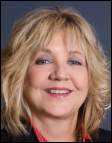

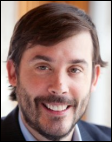
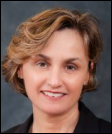

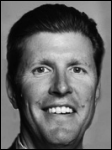



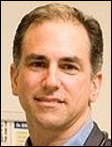

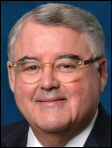





"A valid concern..." Oh please. Everyone picks the software they like and the origin of that software is an afterthought.…